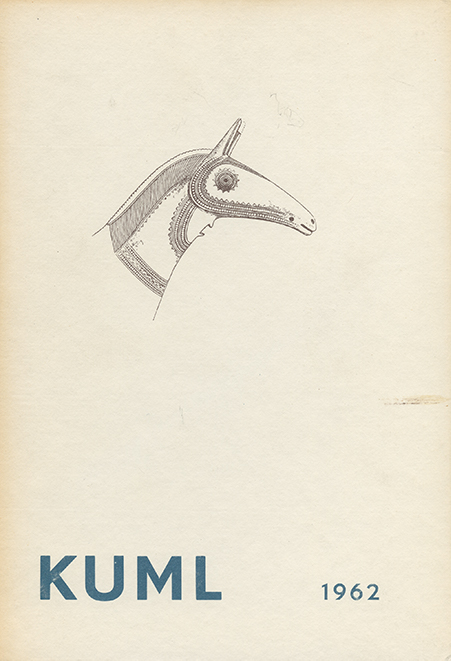To Egekistegrave fra Tobølegnen
DOI:
https://doi.org/10.7146/kuml.v12i12.103927Keywords:
Oak coffin grave, egekistegrav, Tobøl, Middle bronze age, ældre bronzealder, fladhøjAbstract
Two Oak Coffin Graves from Tobøl.
Two of the barrows in the same group as the wheel grave from Tobøl, cf. this volume pp. 80 ff, have yielded oak coffins from the Middle Bronze Age (ældre bronzealder). The first was found in 1860 in Fladhøj just north of Storehøj where the wheel grave came to light. The Fladhøj grave was excavated by local farmers and only a very brief report by a local antiquarian d'Órigny exists. The barrow contained a very solidly packed stone "cave" in which the coffin stood. The oak coffin was well preserved, but the lid was damaged in the middle (plundered?). The only things found were a pair of bones (os sacra), an ox or horse hide and another small piece of hide perforated by ca. 10 small pins presumably of bronze and a heavily fragmented wooden bowl with a handle.
All these objects were subsequently lost except the coffin, which is now in the National Museum 1), d'Órignys sketch of the grave is reproduced in fig. 1; his letters refer to: a,, 3 big stones at the side of the coffin, b, the corner where the hide was found rolled up and c, the position of the wooden bowl.
The other grave was excavated in 1896 by captain A. P. Madsen for the National Museum 3). His report is reproduced (fig. 2). The barrow contained 3 urn graves from the Late Bronze Age, grave B was a stone heap on top of the Middle Bronze Age barrow containing an urn standing on a flat stone slab. The urn contained a bronze razor and a so called arrowhead of bronze and a lump of resin as well as cremated bones (fig. 5).
The urn and the bronzes date the tomb to period IV 19-20).
Another stone heap C partly dug down into grave B contained a small urn in a small stone cist. The urn (fig. 7) was smashed when found and was not kept, but contained cremated bones and a bronze pin (fig. 7) which dates the grave to period VI 21).
The third urn was completely broken and not kept, fig. 2.D.
The primary grave was an oak coffin set in a bed of hand size stones and with 4 bigger stones on top of the lid, which was pressed down into the coffin. The coffin was soaking in water when excavated; it contained (fig. 3) (a) a bronze razor and a single edged knife and parts of a tweezer also of bronze and (b) a clay vessel. Outside, at and on top of the edge of the coffin was a thin layer of cremated bones (c), which must have been placed on top of the lid.
The bronzes are very poorly preserved, but permit a date to period III ( fig. 4) 8). The pot (fig. 4) however is unique and has been dated to period VI due to the lack of parallels 9). As the excavation report seems clearly enough to show its contemporaneity to the bronzes, it must be dated to period III and the faint connections which exist with other types from Denmark 14) and the Lausitz area 10-13) are contemporary. It is to be hoped that the publication of this pot may bring other similar pots -if they exist- to publication and thus elucidate this obscure problem.
Henrik ThraneDownloads
Published
How to Cite
Issue
Section
License
Fra og med årgang 2022 er artikler udgivet i Kuml med en licens fra Creative Commons (CC BY-NC-SA 4.0).
Alle tidligere årgange af tidsskriftet er ikke udgivet med en licens fra Creative Commons.


